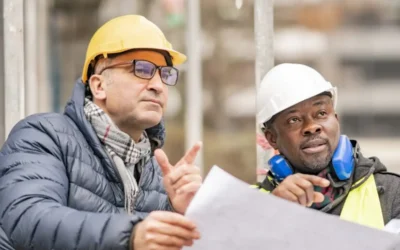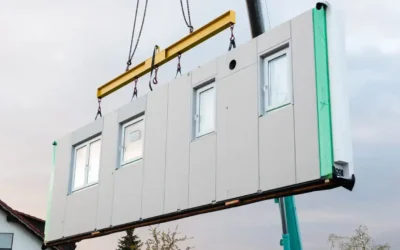How 3D Printing Benefits Contractors in the Construction Industry

3D printing is a revolutionary technology that is generating a lot of attention these days, especially in the construction industry. It has proven to be a beneficial tool for contractors in several ways, ranging from faster production time to more creative freedom.
Keep reading to learn more.
What Is 3D Printing?
3D printing (also known as additive manufacturing) involves using machines that are capable of building objects from designs created with computer software. The object being built is created layer by layer until it reaches its final form. This process differs from traditional manufacturing methods because there are no tools involved to manually cut or mold materials—instead, all pieces are formed simultaneously through layers of material being stacked on top of one another until they fuse into one finished product.
The Benefits of Using 3D Printing in the Construction Industry
Reduced Risk of Health and Safety Hazards on Site
Since 3D printing minimizes the need for dangerous manual labor, there are fewer incidents of accidental cuts, scrapes, and other more serious injuries that are common in traditional construction jobs. Additionally, the finished products will also have smooth edges, making them less likely to cause injury when handled or transported by workers.
Another way 3D printing reduces accidents on the job is by ensuring all parts are made exactly to specifications, with no chance of defects slipping through during the manufacturing or assembly processes. This eliminates incidents where machines break down because they weren’t built well or materials were used incorrectly—a potentially dangerous situation for employees.
Decreased Waste Production
The construction industry significantly contributes to global waste production. Due to the precision with which 3D printing uses resources, it can significantly reduce the amount of waste generated during construction.
Increased Accuracy
The precision of 3D printing means that contractors can expect fewer errors when installing printed components into a structure’s framework. To reach this level of accuracy using traditional manufacturing processes, contractors would have to spend more cost per unit overall to buy molds and other tools that have been designed specifically for each part being created within a project before any manufacturing takes place.
They will also have to consider additional labor costs associated with designing these tools from scratch every time new products are needed. On the other hand, with 3D printing, they can achieve better accuracy at a lower cost per unit.
Faster Construction Speed
3D printing is more efficient because it uses fewer materials and gets things done faster than traditional construction methods. It also allows you to build more complex structures than what’s typically possible with manual labor alone.
Allows for More Creative Freedom
3D printing allows you to create new and unique designs, which is especially valuable in the construction industry. Since 3D printable parts can be produced in a variety of shapes and sizes, they can be made to fit into any space or configuration. This gives contractors the ability to produce custom parts to fit specific needs, which results in more accurate designs that are less likely to leak or fail over time.
With traditional building techniques, you are limited to the shapes and sizes that can be created by your tools. However, with 3D printing technology there are no limits on what shape or size of structure can be built thus providing contractors more creative freedom when designing their projects while allowing them to meet their clients’ demands.
Get in touch with Curtis Partition to learn more about how 3D printing can be incorporated into your next construction project!
Related Articles
Problems You Shouldn’t Still Be Fixing—And How We Help You Avoid Them
Some things in construction shouldn’t still be happening. Ceiling grids that don’t line up. Framing that's out of square. Subs who disappear right before final inspection. Materials that show up late—or not at all. If these issues sound familiar, it’s because they’re...
Cut the Waste, Keep the Schedule: How Prefab is Changing Commercial Construction
The future isn’t coming. It’s already on the job site. If you’ve spent more than five minutes in commercial construction lately, you’ve probably heard the word “prefab” tossed around in job meetings and coffee breaks. But prefabrication isn’t just a buzzword—it’s...
3 Drywall Projects That Show Exactly What Curtis Can Do
When you work in drywall and specialty ceilings, you learn one thing fast: no two jobs are ever the same. That’s what makes the work exciting—and what separates the crews who just show up from the teams that actually build something lasting. At Curtis Partition, we’ve...



